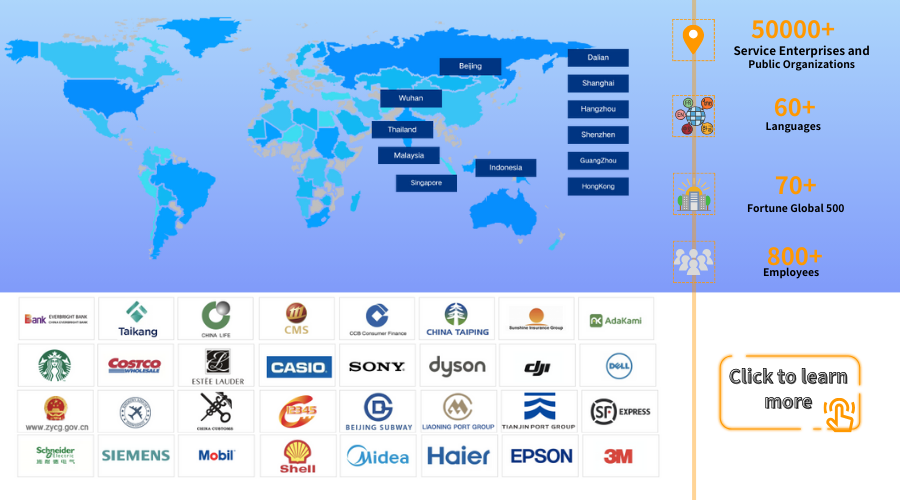Building a High-Performing Customer Service System: Needs Analysis, Selection Strategies & Implementation Roadmaps
文章摘要:In today’s world where customer experience fuels competitiveness, every business needs an intelligent, flexible, scalable customer service system. For startups needing quick responses or enterprise groups standardizing services, a strong system boosts satisfaction, cuts costs, and unlocks data value. Here’s a practical guide to building a customer service system, covering three core areas: analyzing needs, evaluating options, and executing implementation.
Table of contents for this article
- I.Understanding Enterprise Needs: When Is a Customer Service System Essential?
- 1.Business Scale and Inquiry Volume Thresholds
- 2.Industry Characteristics and Service Depth Requirements
- 3.Imperatives for Upgrading Customer Experience
- II.Evaluation Criteria: 5 Core Decision Factors
- 1.Functional Alignment (40% weight)
- 2.Technical Architecture (25% weight)
- III.Implementation Roadmap: 6 Steps from Selection to Launch
- 1.Needs Research and Goal Setting
- 2.Vendor Screening and POC Validation
- 3.System Deployment and Data Migration
- 4.Process Design and Script Library Building
- 5.Staff Training and Phased Rollout
- 6.Continuous Optimization and Upgrades
- IV.Conclusion: Customer Service Systems as Your "Experience Moat"
In today’s world where customer experience fuels competitiveness, every business needs an intelligent, flexible, scalable customer service system. For startups needing quick responses or enterprise groups standardizing services, a strong system boosts satisfaction, cuts costs, and unlocks data value. Here’s a practical guide to building a customer service system, covering three core areas: analyzing needs, evaluating options, and executing implementation.
I.Understanding Enterprise Needs: When Is a Customer Service System Essential?
1.Business Scale and Inquiry Volume Thresholds
(1)Startups (daily inquiries < 50): Basic service can be managed via WeChat Work/DingTalk + smart forms, but reserve interfaces for future integration with professional systems. (2) Growing enterprises (daily inquiries 50–500): Deploy lightweight SaaS customer service systems, focusing on omnichannel access, ticket routing, and basic reporting. (3) Enterprise groups (daily inquiries > 500): Require on-premises deployment + AI middleware, supporting multi-brand/region independent management, data security compliance, and integration with complex business systems.
Case Example: A beauty brand saw daily GMV exceed 2 million on Douyin livestreams, leading to a 300% surge in inquiries the next day. Its existing Excel + manual WeChat response model caused 40% order loss. After urgent deployment of a customer service system, order processing time dropped from 8 hours to 45 minutes.
2.Industry Characteristics and Service Depth Requirements
(1)E-commerce & retail: Need integration with order tracking, logistics updates, and return/exchange processes, with a focus on optimizing smart recommendations and after-sales dispute resolution.
(2) Financial services & insurance: Must meet dual-recording (audio + video) compliance, include risk assessment script libraries, multi-level permission controls, and 100% AI quality inspection coverage.
(3) Local lifestyle services: Require LBS positioning, in-store inventory checks, service booking scheduling, and smart dispatching to the nearest technician.
(4) SaaS/tech enterprises: Need deep API integration, technical documentation libraries, and intelligent code assistants, with engineer agents often accounting for over 30% of staff.
Industry Data: 45% of education industry complaints stem from "information asymmetry"—a issue reducible by 30% through knowledge bases + AI prediction. In manufacturing, 60% of after-sales issues can be pre-empted via device data collection + intelligent diagnostics.
3.Imperatives for Upgrading Customer Experience
(1)Omnichannel integration: Customers moving from Douyin inquiries to Tmall orders to mini-program after-sales need consistent service without repetitive communication.
(2)24/7 responsiveness: Industries with over 20% nighttime inquiries (e.g., maternity, pet care, healthcare) require smart chatbots + staff shifts.
(3)Personalized service: High-value customers need exclusive VIP channels, with records of preferences, purchase history, and complaints enabling truly tailored experiences.
II.Evaluation Criteria: 5 Core Decision Factors
1.Functional Alignment (40% weight)
(1) Omnichannel access: Support for at least 10 channels (websites, apps, mini-programs, social media, smart terminals, etc.).
(2) Intelligent interaction:
· Chatbot intent recognition accuracy ≥ 95% (≥ 98% for financial services).
· Support for multi-turn conversations, interruptions, and sentiment recognition.
· API interfaces for business system integration.
(3) Ticket system depth: Custom fields, SLA rules, cross-department routing, and automatic escalation mechanisms.
(4) Analytics: 15+ report templates covering agent performance, service costs, churn warnings, and product improvement insights.
2.Technical Architecture (25% weight)
(1)Deployment models:
· SaaS: Ideal for SMEs (low cost, quick launch) but with limited data isolation.
·On-premises: Suitable for data-sensitive industries (finance, government), supporting localized adaptations (e.g., Kylin OS, Dameng Database).
·Hybrid cloud: Balances flexibility and security, with core data stored locally and high-frequency interactions processed in the cloud.
(2)Scalability: Support for low-code development, third-party system API integration (ERP, CRM, order systems), and plug-and-play AI large model access.
(3)Security compliance: Certified by Level 3 Cybersecurity Classification, GDPR, and ISO 27001, with data encryption, audit logs, and hierarchical permissions.
3.Cost-Effectiveness (20% weight)
(1) Explicit costs:
· SaaS: Priced per agent/inquiry volume (¥50–300/month/agent).
· On-premises: Hardware + software + implementation (¥500,000–5,000,000).
(2)Hidden costs: System migration, staff training, custom development, and ongoing maintenance.
(3)ROI Example: A retail enterprise reduced labor costs by 30% and increased repurchase rates by 25% with a customer service system, recouping investment within 6 months.
4.Service Ecosystem (10% weight)
(1) Implementation team: Provide industry-specific solution templates, process mapping, and data migration services.
(2) Customer success: Dedicated CSMs (Customer Success Managers) offering regular operational optimization advice and training on feature updates.
(3) Ecosystem partners: Integration with platforms like UFIDA, Kingdee, and Feishu, plus access to value-added services (smart outbound calls, e-contracts, etc.).
5.Brand Reputation (5% weight)
· Check Gartner Magic Quadrant and IDC market reports.
· Research case studies from industry leaders (e.g., Ping An Bank for finance, Liangpin Puzi for retail).
· Test basic system features (minimum 30-day free trial).

III.Implementation Roadmap: 6 Steps from Selection to Launch
1.Needs Research and Goal Setting
(1) Form a cross-departmental project team (customer service, IT, operations, finance).
(2) Map customer journey touchpoints, highlighting service pain points and optimization opportunities.
(3) Set 3–6 month KPIs (e.g., response time ≤ 1 minute, resolution rate ≥ 90%, satisfaction ≥ 4.8/5).
2.Vendor Screening and POC Validation
(1) Shortlist 3–5 vendors, compare demos and quotes.
(2) Conduct POC (Proof of Concept) testing, focusing on high-frequency scenarios (e.g., returns, complaint handling).
(3) Sign NDAs to ensure test data security.
3.System Deployment and Data Migration
(1) On-premises deployment: Complete hardware procurement, network configuration, and security hardening.
(2) Historical data migration: Establish cleaning rules to ensure accurate field mapping.
(3) Develop API interfaces for integration with existing business systems.
4.Process Design and Script Library Building
(1) Create service SOPs (Standard Operating Procedures) covering inquiries, complaints, tickets, and follow-ups.
(2) Build knowledge bases with FAQs, product manuals, regulations, and case studies.
(3) Train smart chatbots using industry-specific corpora and historical conversation data.
5.Staff Training and Phased Rollout
(1) Train teams on system operations, service scripts, and contingency plans.
(2) Launch a pilot with select stores/channels, gathering feedback for optimization.
(3) Develop a transition plan to ensure smooth switching between old and new systems.
6.Continuous Optimization and Upgrades
(1) Establish a service monitoring dashboard to track real-time KPIs.
(2) Hold monthly review meetings to refine script libraries and processes.
(3) Roll out quarterly feature updates, integrating new technologies like AI large models and metaverse customer service.
IV.Conclusion: Customer Service Systems as Your "Experience Moat"
Against the backdrop of fading traffic dividends and intensified competition for existing customers, customer service systems have evolved from cost centers to value drivers. A leading sportswear brand leveraged data from its customer service system and discovered that size-related inquiries accounted for over 30% of all queries. In response, it revamped its size charts and launched an AR fitting feature, cutting return rates by 25%. Similarly, a maternity enterprise analyzed nighttime inquiry data and identified strong demand for feeding guidance; it then introduced 24/7 parenting consultant services, which boosted milk powder repurchase rates by 40%.
Businesses should view customer service system development through a "long-termism" lens: focus on current functional needs while reserving room for technical upgrades. By deeply integrating intelligent customer service with operations, enterprises can not only improve service efficiency but also gain insights into customer needs, refine products, and drive growth—ultimately building a customer-centric competitive edge.
Udesk Intelligent Customer Service System integrates cloud call centers, online support, and ticket systems into one platform, connecting over 20 domestic and international communication channels to seamlessly engage your global customers. Connect with customers across touchpoints, boost sales, enhance service quality, and deliver exceptional experiences. Gain real-time insights into customer intent—converting leads has never been easier!
The article is original by Udesk, and when reprinted, the source must be indicated:https://www.udeskglobal.com/blog/building-a-high-performing-customer-service-system-needs-analysis-selection-strategies-implementation-roadmaps.html
Construction of Customer Service Systemcustomer service systemCustomer Service System Platform

 Customer Service& Support Blog
Customer Service& Support Blog


